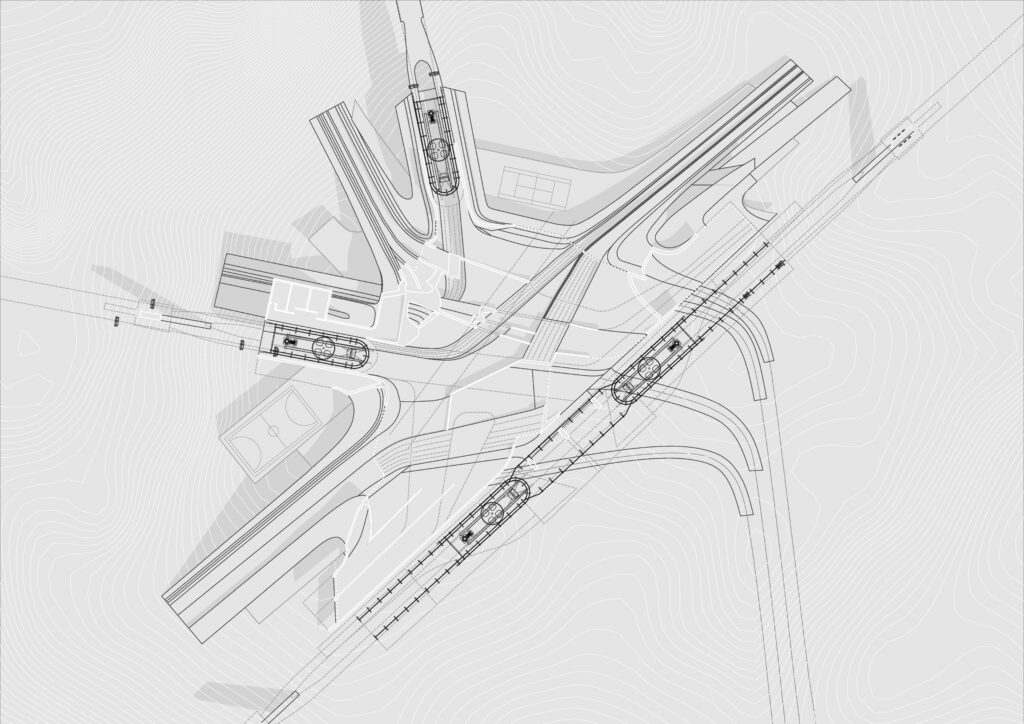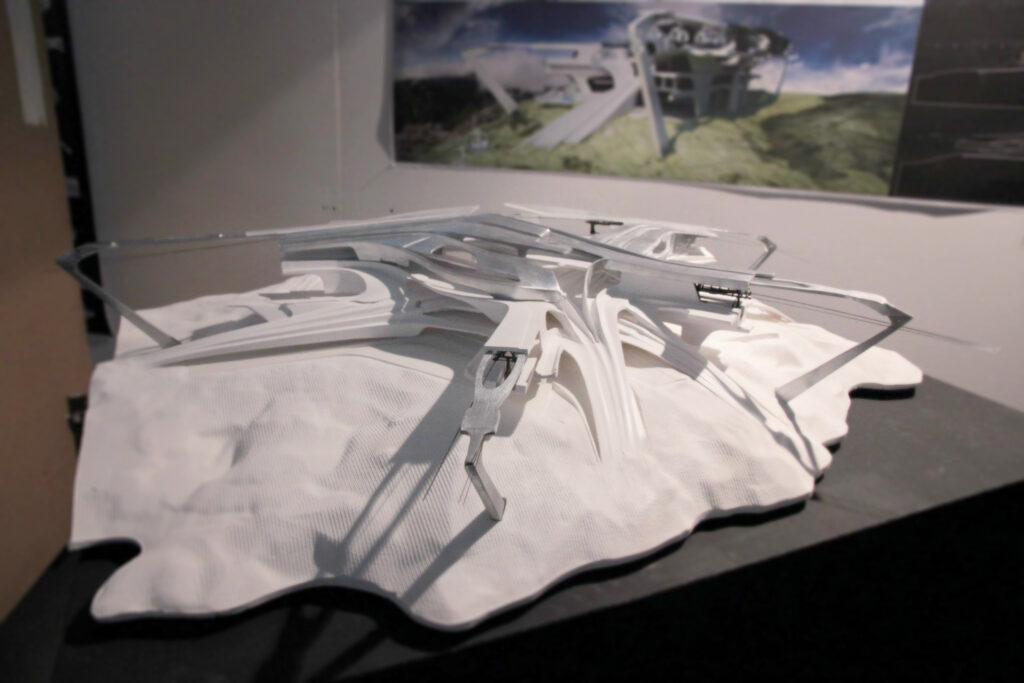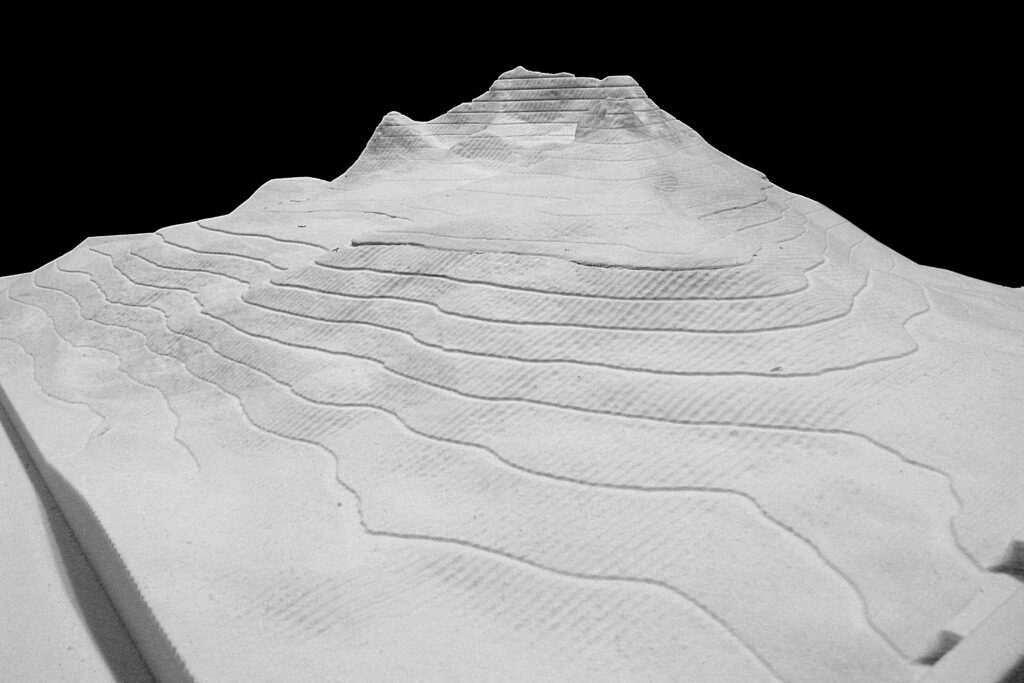In a very cerebral and paradigm shifting project, NBAX worked with the Doppelmayr Garaventa Group to investigate the potentials of a ski resort with more than one function; one in which the change in use was not achieved by moving parts but simply by entering the space from an opposite side and changing seasons. This shifting space hierarchy produced a completely different reading of the program. The results of this project could be applicable to the way in which humans utilize and inhabit different structures in winter versus summer.
While many of today’s multifunctional spaces are empty and have no specific intent or meaning, NBAX wanted to research and prove that the possibility of multifunctional capabilities and purpose could exist. Designing, theorizing, and testing these ideas, NBAX focused these on a multifunctional transportation knot between several skiing resorts in the Austrian Alpes. These towns were cut off from each other during the winter and are located where extreme environmental changes during the summer and winter season demand flexible program.

NBAX was responsible for researching the theoretical principles and the design of the facility in the Austrian Alpes. In order to prove that these theoretical principles would work in real world applications, these shifting conditions and uses were simulated in a virtual environment. By creating artificial situations with varying access points and different levels of usage, NBAX was able to prove that the function of a space is not a given but changing based on perspective and use. These findings have the potential to challenge and replace the idea of multi-functionality by moving parts or empty rooms. In layman’s terms, in a role that is part God, part psychologist, and part architect, NBAX set about to challenge and prove that some of the most difficult weather conditions on the planet are not the determining factor for the approach and frequency of how we use a certain physical space.
NBAX simulated the movement of people and other shifting conditions in order analyze their effect on a space and its use. Simulating the directional movement in winter from one skiing resort to another and comparing this with the movement in a building from space to space, they were able to understand how to reinterpret its use. NBAX also created algorithms that would simulate different room organizations to analyze how the use would change. 3D animation software was implemented to visualize these movement patterns and to derive spatial organizations from it.



